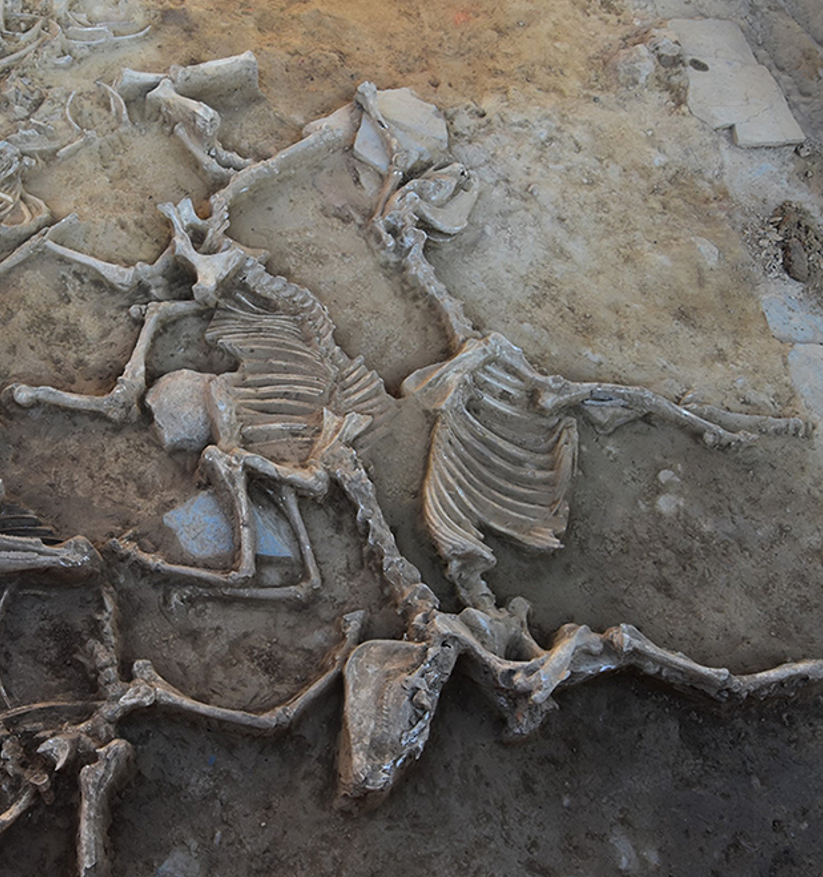The discovery of 6,770 ancient bones belonging to 52 different animals dating to the Iron Age left archaeologists with a big question: what on earth went on here? In a new study, researchers in Spain believe they might have a clear answer.
The jumbo bone pit was recently excavated at Casas del Turuñuelo, a site in southwest Spain that was inhabited during the Iron Age, around the fifth century BCE. After compiling their evidence, the researchers concluded that this mysterious burial ground was the site of ritualized animal sacrifice.
Among the trove of bones were at least 41 horses, six cattle, four pigs, and a single dog. The layers of dirt show the animals were buried in three sequential phases. The animals in the first two phases were buried unaltered, but the skeletons in the last phase looked as if they were butchered for meat.
Perhaps, the study authors claim, this is evidence that the ritual sacrifice eventually turned into a feast or banquet. Waste not, want not, so the saying goes.

Many of the animals, such as the horses, were buried in pairs.
Image credit: National Project Construyendo Tarteso
The remains indicate that the animals died as healthy adults, affirming that it’s unlikely they simply perished due to a disease outbreak or natural disaster. Furthermore, some of the animals, particularly the horses, were laid to rest in organized pairs.
“This arrangement of equid pairs bearing similar characteristics raises the possibility that they were cart animals sacrificed simultaneously. The idea is bolstered by their pathologies indicative of having served for riding and possibly to pull carts. The discovery of metallic bits in situ coupled with premolar wear and erosion of the gaps among more than half of the equids prove they were handled and controlled and thus served for work,” write the study authors.
Another important clue came in the form of burned vegetable matter at the site, which is typical of the remains left by burned offerings.
It’s very unusual to find hard evidence of a mass animal sacrifice in the Mediterranean during the Iron Age, although there are a curious number of literary sources that suggest such an event did occur in ancient times.
For instance, Homer’s Odyssey recounts the sacrifice of 81 black bulls by King Nestor on the beach of Pylos, while his other blockbuster, Iliad, speaks of 50 black rams being sacrificed by Peleus, the father of Achilles, if his son were to return alive from Troy.
Solid archaeological evidence like this, however, is remarkably rare and makes the new discoveries at Casas del Turuñuelo exceptional.
The new study is published in the journal PLOS ONE.
Source Link: Thousands Of Bones From 52 Creatures Discovered In Ancient Animal Sacrifice Pit